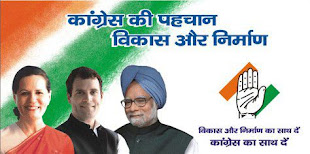The year 1986 marked a watershed in the fledgling efforts of Indian Railways to harness Information Technology for the benefit of the citizens of
Wide Ranging Impact
The number of transactions being handled by the IT systems on the Indian Railways today speaks volumes of their quality and capabilities. The Indian Railways run about 11000 trains each day, freight and passenger included.
· Daily a million passengers reserve their berths and seats through the Passenger Reservation System.
· Close to fourteen million passengers are catered to daily by the Unreserved Ticketing System and that number is increasing rapidly.
· The Freight Operations Information System, the first application developed by CRIS, continues to grow and provide value added services for freight customers. Today the E-payment facility within this application accounts for nearly 50% of the revenues from freight (annual freight revenue is about Rs. 70,000 crore / Rs. 700 billion).
· All the 67 divisions of Indian Railways have computerized control offices thus capturing movements of every train across every station in the Control Office Application.
· The Crew Management System is used daily by 30000 crew members to sign on and sign off from their work places.
· The Integrated Coaching Management System helps manage over 40,000 passenger coaching vehicles.
These IT applications are critical to directly meet the requirements of passenger and freight business. There are many other applications on the anvil that have a greater emphasis on improving asset management and efficiency.
Innovative Organizational Design
CRIS functions as an autonomous organization of the Indian Railways. It draws its human resources from the Railways as well as from India
Technology Leader
In the initial years, the late eighties and early nineties, the focus was on the two major applications PRS and FOIS. A significant moment in the history of CRIS was when both these projects became completely in-house projects. The organisation gained tremendous confidence as a result of this responsibility and the success of these projects (like the new reservation logic developed within CONCERT) totally changed the perception of what CRIS could do. The demands and expectations of Railways’ customers rose significantly by the beginning of the twenty-first century, as it became evident that the potential for effective use of IT usage was huge. Suddenly the number of projects being sanctioned and assigned to CRIS for execution jumped and pilot projects began to be implemented. By this time CRIS had grown well beyond what had been initially envisaged. Cutting edge IT solutions were explored and developed. The success of the pilot projects led to a certain impatience to see these implemented all over the country. For speedy implementation, CRIS brought in more resources and domain knowledge experts to participate in this quiet revolution.
Central Role
The visionary approach of the Ministry of Railways has led to a happy situation where most critical activities of core Railway operations are managed through IT-enabled systems. However, IT is a dynamic area. Customers expect greater convenience as more and more intelligent devices penetrate every section of society. This requires an energetic and dynamic IT organization that can constantly stay abreast and transform state-of-the-art technologies into effective solutions for customers. CRIS is well-poised to take on this role and further transform the working of the Railways. Information gathering and basic analysis is computer assisted. Decision support elements are also being provided. The key challenge today for the Railways lies in this area, in creating such systems that enable a complete transformation of key organizational processes. It is an appropriate time for the Indian Railways and CRIS to develop a long term vision for sustained IT development, as IT applications are now at the very heart of the Railway business. Today, CRIS finds itself on the threshold of a new era of IT-driven organizational transformation, coupled with the use of IT to provide far quicker and more convenient services to the customers of the Indian Railways. These goals only make the organization more resolute in its efforts to produce and manage high-quality information systems for the Indian Railways.


























0 Comments